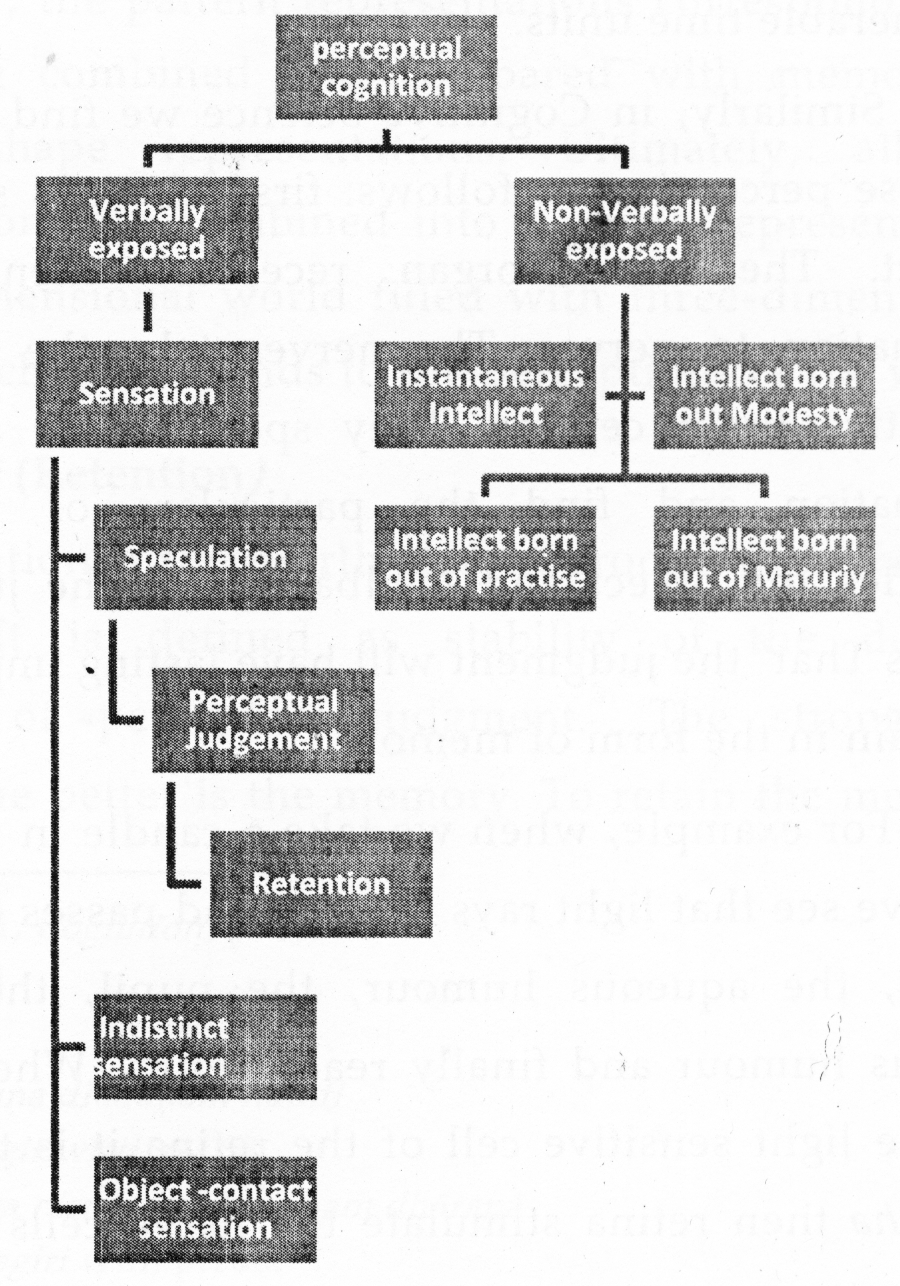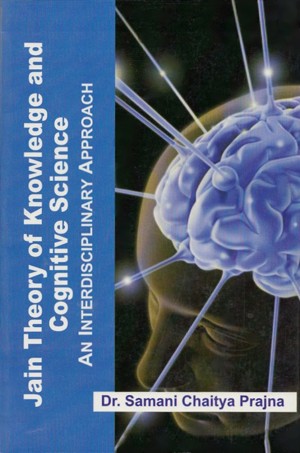3.6 Dhāraṇā (Retention)
Retention is the fourth step in process of perceptual cognition. It is defined as stability of the definite knowledge of perceptual judgment.[25] The stronger is retention, the better is the memory. To retain the meaning or the object determined by perceptual judgment in such a way that it may be remembered even after a short or long duration of time in the absence or presence of the object is known as retention.
For example, remembering that such a pleasing sound is produced by a conch only, for a long or short duration of time is retention. Generally, we often forget the lessons that we have learnt. The only reason for this is that -we do not retain the hymns or the lessons well. Memory can never be good without retention. The durational time of retention is supposed to be numerable, innumerable time units.
Similarly, in Cognitive Science we find the process of sense perception as follows: first, there is sense object contact. The sense organ receptors then pass the information to nerves. The nerves take the message to respective brain centers. They speculate or analyse the information and find the particulars of the object, identifies the object and feedback with the judgment as 'This is That' the judgment will have lasting impressions in the brain in the form of memory.
For example, when we take a candle in front of our eyes/we see that light rays interact and passes through the cornea, the aqueous humour, the pupil, the lens and vitreous humour and finally reach retina. When the light hits the light sensitive cell of the retina it is the stage of avagraha then retina stimulate the nerve cells, the optic nerves carries the message to the visual cortex in brain, there occurs the speculation in other words analysis of the object. This is stage of Īhā. When the visual cortex determines (judges) the object as 'this is a candle', it is avāya. Then when the same is impressed in memory then it is the stage of retention. Similarly, it can be explained in the cases of other sense organs too. When a child sips the liquid or sniffs a rose, it passes through the same stages of Sensation (avagraha), Speculation (Īhā), Perceptual judgment (avāya) Retention (dhāraṇā) occur.
Fig No. 3.4. Classification of Perceptual Cognition

Once the object is perceived, processed and determined, it has to be stored in our memory that can be recollected whenever required.
When avagraha, ihā, avāya dhāraṇā is multiplied with five senses and mind considered separately, they make it twenty-eight. For example:
- sensation of ear
- sensation of eye
- sensation of nose
- sensation of taste
- sensation of touch and
- sensation of mind.
Similarly there are six kinds of speculation, six kinds of perceptual judgment and six kinds of retention. Thus, there are twenty four kinds of perceptual knowledge based on verbal symbol and there are four kinds of indeterminate sensation, thus they all come to twenty eight kinds. This way altogether, perception can be of twenty eight kinds depending on the nature of perception.
Until now the knowledge has occurred through senses empirically, this is termed as director Sāmvyavahārika Pratyakṣa. But the information processing that occurs after this stage such as recollection or memory, recognition, etc. are purely indirect as they are dependent on the above said stages for their data. As the data of retention is, so the memory or recollection will be. Thus, it is clearly described that memory is caused by retention, recognition is caused by memory and experience, logic is caused by recognition and inference is caused by the decisions based on logic. These thus, are dependent on others and should therefore, be regarded as the kinds of indirect instruments.[26]
In Jain philosophy, the division of direct and indirect has been made on the basis of being immediate-cum-lucid and or not being so. Knowledge in both the conditions is real. Considered from the point of view of cause and effect, all the perceptions, whether they are direct or indirect, are correlated. For example, apprehension is cause, speculation is its effect. Speculation is cause, perceptual judgment is its effect. Perceptual judgment is the cause, retention is its effect. Retention is the cause, memory is its effect. Recognition is the cause, reasoning (logic) is its effect. Logic is the cause, inference is its result. Thus the former step acts as cause and that of the latter is known as effect. Now we shall consider the kinds of indirect perception one by one.
Nandi, 3.54
Dhāraṇaṁ puṇa Dhāraṇaṁ huṁti
Nandīmalayagiri Vṛtti, p. 168.
tasyevārthasya nirṇtasya Dhāraṇaṁ dhāraṇā
Nandi Malayagiri Vṛtti, p. 168.
pramāṇa Mimāmsa, p.1.2
avagraheāvāyadhāraṇāsmṛtipratyabhijnānohānumānānāṁkrameṇopajāya mā-nāṇaṁ yad yat pūrvaṁ tat tat pramāṇaṁ yad yad uttaraṁ tat tat phalarūpaṁ pratipattavyam / avagrahaparināmavānhyātmā ihārūpa - phalatayāpariṇamati itīhāphalāpekṣayā avagrahaḥ pramāṇa / tato apīhāpramāṇam avāyaḥ phalam/ punaravāyaḥ pramāṇaṁ dhāraṇā phalam/ īhādhāraṇayor jñānopādānatvāt jñānarūpatonneyā /tato dhāraṇā pramāṇaṁ smṛtiḥ phalam/tato api smṛtiḥ pramāṇaṁ pratyabhijñānam phalam/tato anumānaṁ phalam iti pramāṇaphalavibhāga iti,
 Samani Chaitya Pragya
Samani Chaitya Pragya

